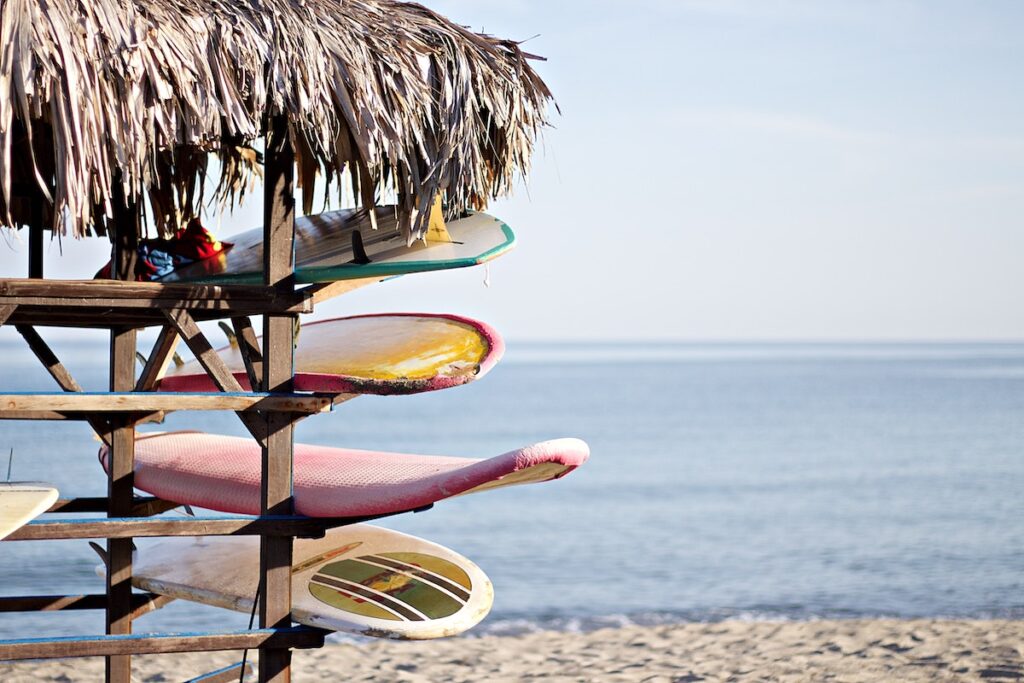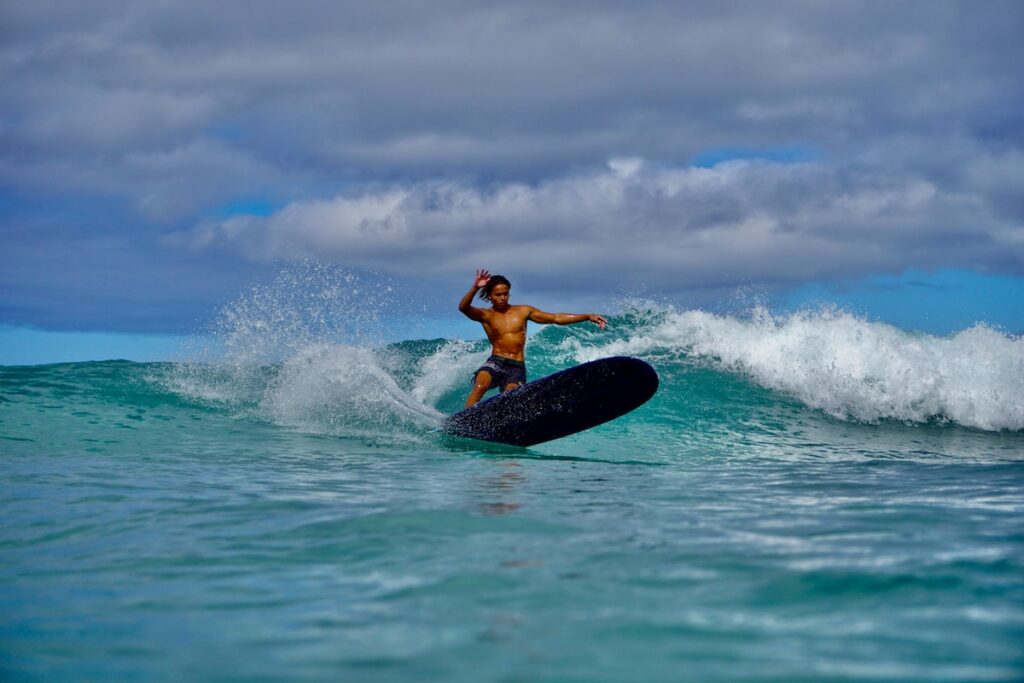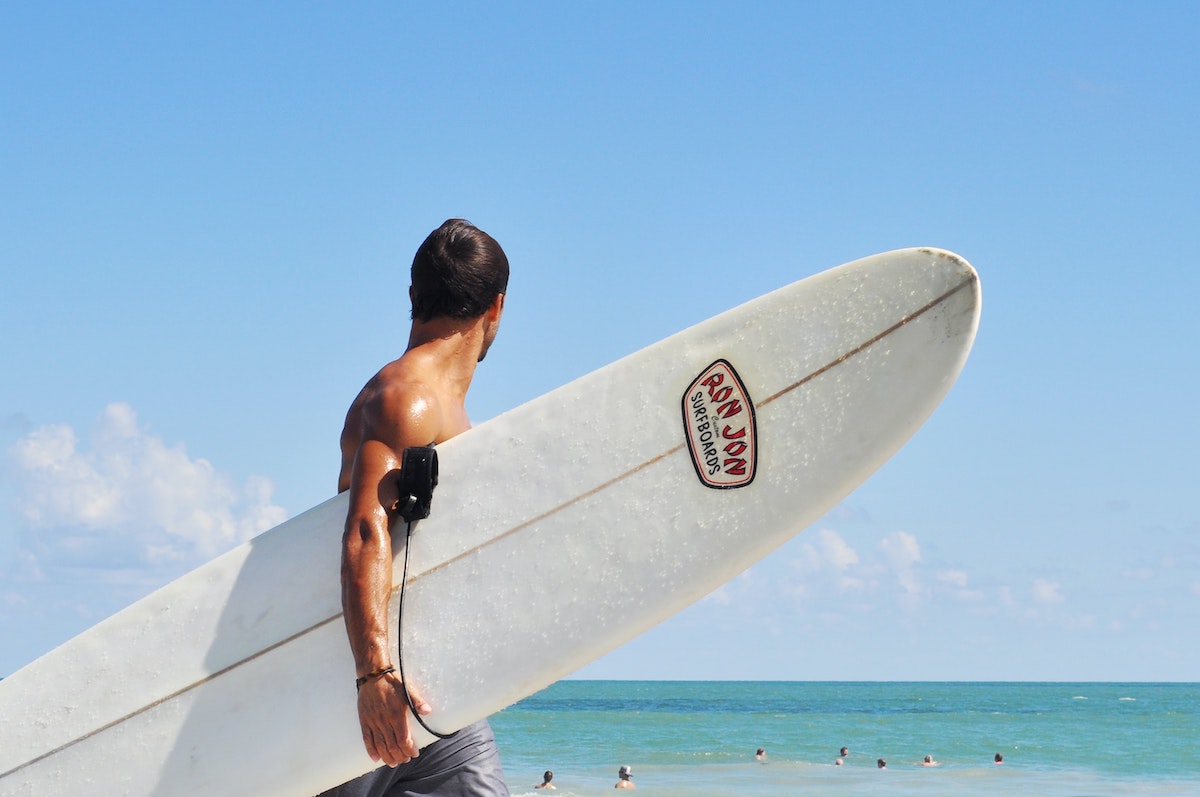Riding a longboard is one of the greatest pleasures in life.
They’re a breeze to paddle and infinitely easier to catch waves on compared to a shortboard.
Plus, you can surf even when the conditions are small, which means lots of beginners start their learn-to-surf journey on a longboard.
Let’s not forget that watching an experienced longboard surfer cross step up the length of the board looks super cool.
That being said, longboards can be unwieldy for a beginner surfer.
They’re long, wide and heavy to carry.
You can also feel like you’re paddling a boat given their surface area and size.
But don’t let this put you off learning to surf on a longboard.
Instead, use the following information and tips in this blog post to kickstart your longboard surfing experience!
What is a longboard
To recap though, a longboard is any board that’s ridden at a length roughly 3 or more feet taller than the rider. (9’+ are considered longboards, 7′-8’9 are considered “fun boards or mini-malibus”
There are many different types of longboard, such as foamies, logs, noseriders and mini-malibus. However, they all have a rounded nose, wide decks and additional thickness for more stability and buoyancy.
For these reasons, a longboard offers a more mellow and some may say nuanced riding experience compared to shortboards.
They’re also the board of choice for those of you who are just starting out with surfing.
What equipment do you need for longboard surfing?
If you want to learn to surf in a tropical destination like Costa Rica, all you need for a longboard surf session is wax, a leash and a fin.
The wax needs to be suitable for tropical conditions in order to be effective. As for the leash or legrope, it should be strong enough to bear the strain of a longboard without snapping.
The leash should has the same lenght as the longboard, to prevent the board “springing” back to you if you fall and the wave keeps taking the board away from you until the leash brings it back to you.
Of course, this might sound like a lot to remember, but you’ll be happy to know we have our own supply of longboards, leashes, wax and fins for you to use at our surf retreat, which means you don’t need to bring your own.
Plus, everything is prepared before your arrival (fresh coat of wax, the right leash for the reight board, for the right guest).
Is it easy to surf on a longboard?
Yes!
If you want to learn how to surf properly, a longboard is the easiest and fastest way to master the basics.
They’re stable and user-friendly which makes them wave-catching machines.
Longboards are also more robust than toothpick-like shortboards, so you don’t need to worry (too much) about snapping one.
(Unless a big wave breaks right on your board… so make sure you understand where is the impact zone and “When the waves breaks here, don’t be there!”)
How long does it take to get good at surfing a longboard ?
This is a hard question to answer.
It really depends on the person and the waves that they have access to.
Someone who is practicing every day on perfect longboard waves like the ones where we host our surf retreats can learn the fundamentals in one week with no problem.
On the flip side, it’s hard to make any long-lasting progress if you’re only surfing a few times a month or less.
Aren’t longboard surf boards harder to turn?
Yes and no.
If you’ve never turned a surfboard before, you might be surprised to learn that longboard surfboards aren’t all that difficult to turn, so long as you don’t expect to make fast direction changes.
As for the best technique involved in turning a longboard, we will teach you that once you progress past the beginner surfer stage and move into intermediate territory
Should I learn to surf on a longboard?
Whenever any asks us if they should learn to surf on a longboard, our answer is always “Hell yes”!
Like we said earlier, longboarding is easy to pick up under the right guidance.
What we didn’t mention though is that due to the relatively simple learning curve, it’s also really fun.
After all, the last thing we want is for your very first surf session to be a bummer.
By taking a longboard out for a surf and studying from our resident experts, you can learn surfing faster and feel 100% safe doing so.







